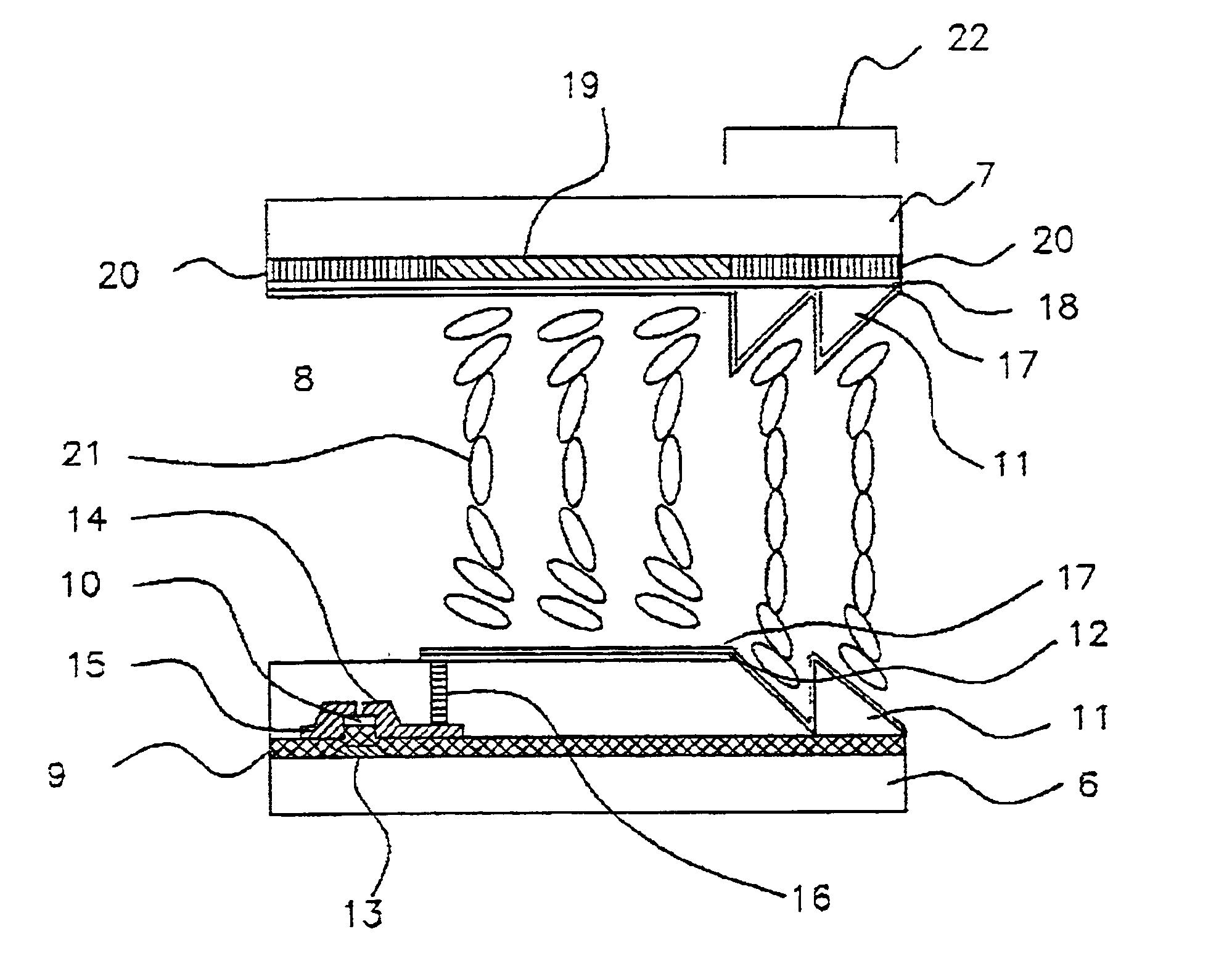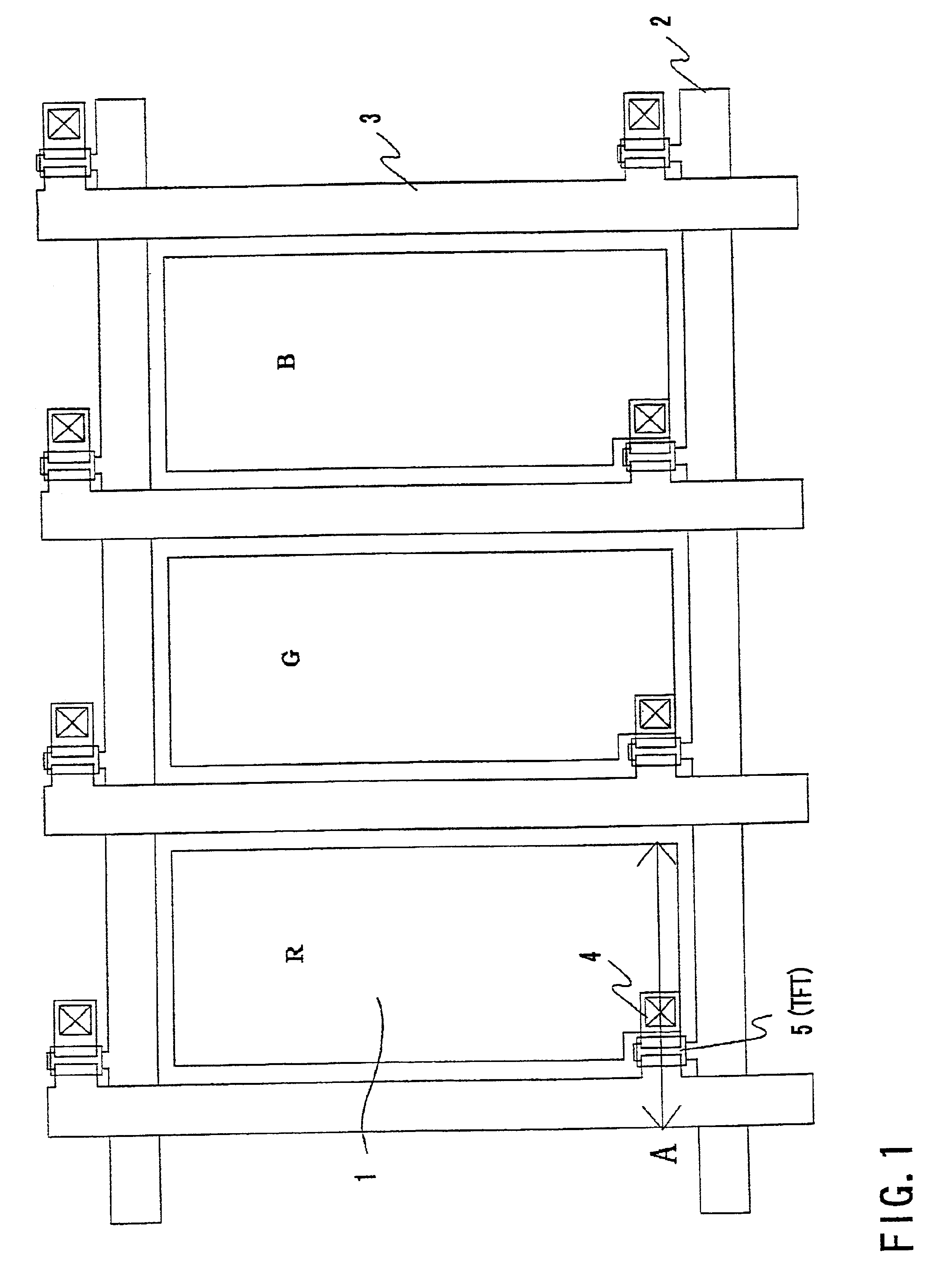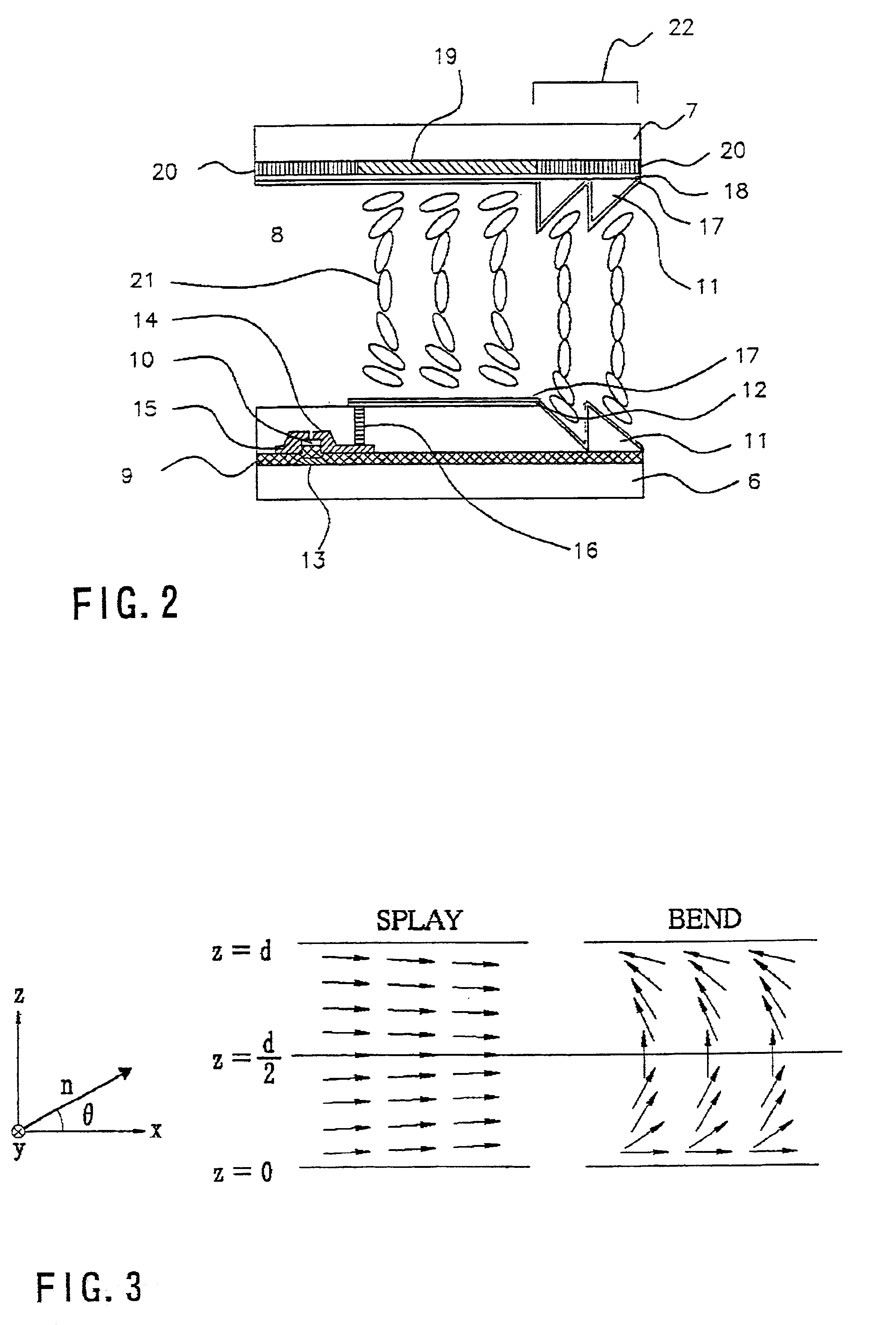OCB type liquid crystal display having transition nucleus area from splay alignment to bend alignment
a liquid crystal display and transition nucleus technology, applied in the field of ocb-type liquid crystal display, can solve the problems of large dependence on viewing angle, large light leakage caused by wavelength dispersion, and low response speed of liquid crystal display of tn system, etc., to achieve easy production and stably maintain the bend alignment condition, maintain the bend alignment, and maintain the bend alignment
- Summary
- Abstract
- Description
- Claims
- Application Information
AI Technical Summary
Benefits of technology
Problems solved by technology
Method used
Image
Examples
embodiment 1
[Embodiment 1]
FIG. 1 is a plan view showing pixels formed on an active matrix substrate of an OCB type liquid crystal display according to the present embodiment. As shown in FIG. 1, pixel electrodes 1 are disposed in a matrix on the active matrix substrate. Also, there are disposed gate lines 2 and drain lines 3 which pass along the periphery of the pixel electrodes 1 and which are perpendicular to each other. In the proximity of each of intersections between the gate lines 2 and the drain lines 3, there is disposed a thin film transistor (TFT) 5. A drain electrode of each TFT 5 is coupled with the drain line 3, and a gate electrode of each TFT 5 is coupled with the gate line 2. Also, a source electrode of each TFT 5 is coupled with the pixel electrode 1 via a contact hole 4. By using three sets of the pixel electrodes 1 and the TFT's 5 which perform image display of red (R) color, green (G) color and blue (B) color, respectively, it becomes possible to constitute one pixel for col...
embodiment 2
[Embodiment 2]
FIG. 8 is a partial schematic cross sectional view of a pixel portion of an OCB type liquid crystal display according to a second embodiment of the present invention. FIG. 8 is a cross sectional view approximately taken along the line A—A in FIG. 1. As shown in FIG. 8, the OCB type liquid crystal display according to the present embodiment comprises a lower side substrate 6, an opposing side substrate 7 which is disposed on the opposite side of the lower side substrate 6, and a liquid crystal layer 8 interposed between the lower side substrate 6 and the opposing side substrate 7. The thickness of the liquid crystal layer 8 is 5-6 μm. On the lower side substrate 6, there are disposed a gate insulating film 9, a TFT 10, an insulating film 11, a pixel electrode 12, a color filter 19 and a light shield film 20. More particularly, on the lower side substrate 6, there is stacked the gate insulating film 9 which is made of photosensitive acrylic resin. On the gate insulating ...
embodiment 3
[Embodiment 3]
With reference to FIGS. 9A-9G and FIGS. 10A-10F, an explanation will now be made on another method of manufacturing an active matrix substrate used in the OCB type liquid crystal display according to the present invention. A process for fabricating portions of the OCB type liquid crystal display other than the active matrix substrate may be the same as that described with reference to the first embodiment.
First, gate electrodes 13 are formed on a lower side substrate 6, and a gate insulating film 9 is stacked on the gate electrodes 13 and lower side substrate 6. Source electrodes 14 and drain electrodes 15 are formed on the gate insulating film 9, and thereby an active matrix substrate having TFT's 10 as switching elements is formed, as shown in FIG. 9A. Here, it should be noted that each of the switching elements is not limited to the TFT, but may be constituted of other switching element, for example, a diode and the like.
Thereafter, an insulating film 11 which is ma...
PUM
| Property | Measurement | Unit |
|---|---|---|
| angle | aaaaa | aaaaa |
| response time | aaaaa | aaaaa |
| response time | aaaaa | aaaaa |
Abstract
Description
Claims
Application Information
 Login to View More
Login to View More - R&D
- Intellectual Property
- Life Sciences
- Materials
- Tech Scout
- Unparalleled Data Quality
- Higher Quality Content
- 60% Fewer Hallucinations
Browse by: Latest US Patents, China's latest patents, Technical Efficacy Thesaurus, Application Domain, Technology Topic, Popular Technical Reports.
© 2025 PatSnap. All rights reserved.Legal|Privacy policy|Modern Slavery Act Transparency Statement|Sitemap|About US| Contact US: help@patsnap.com



